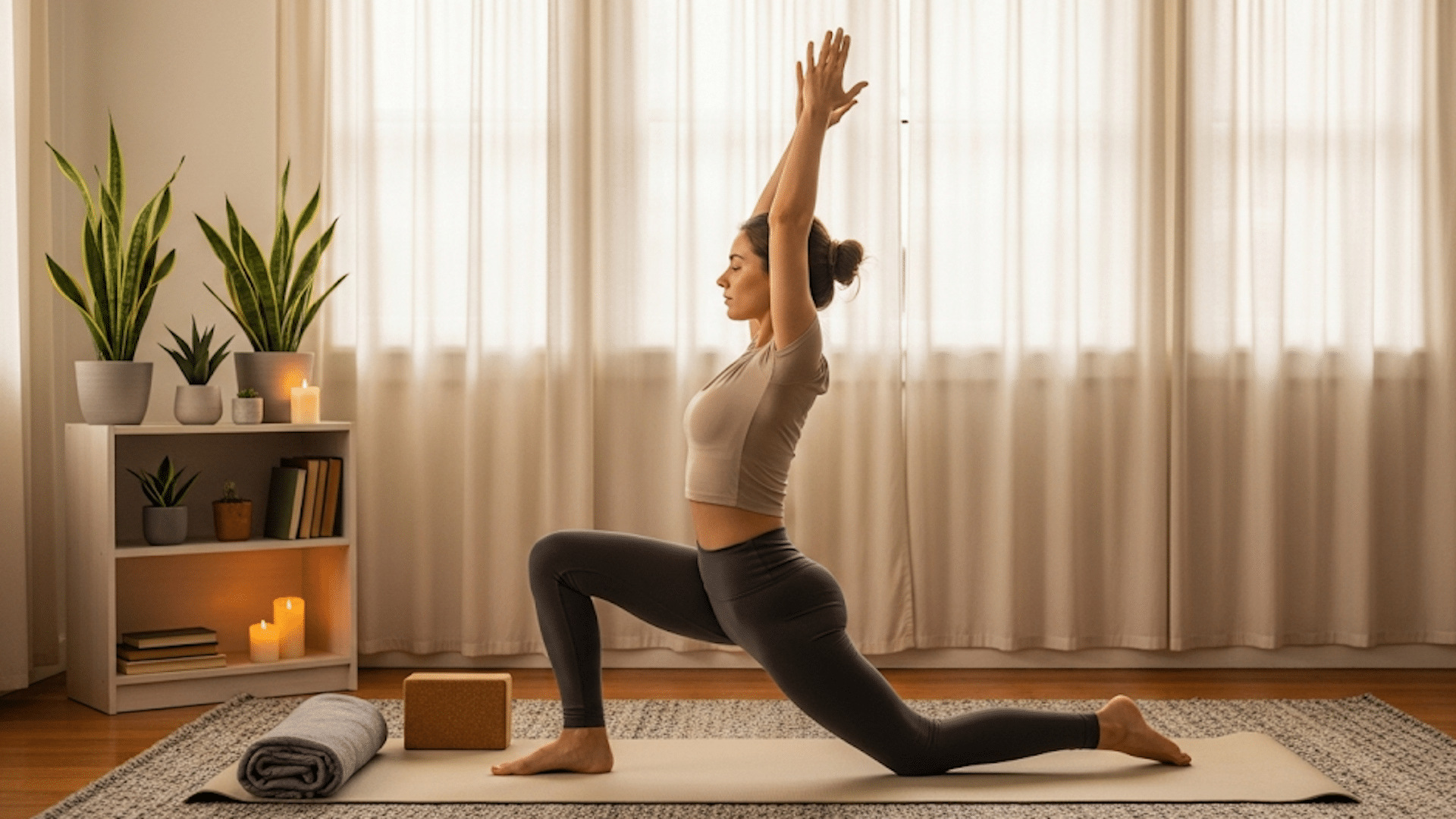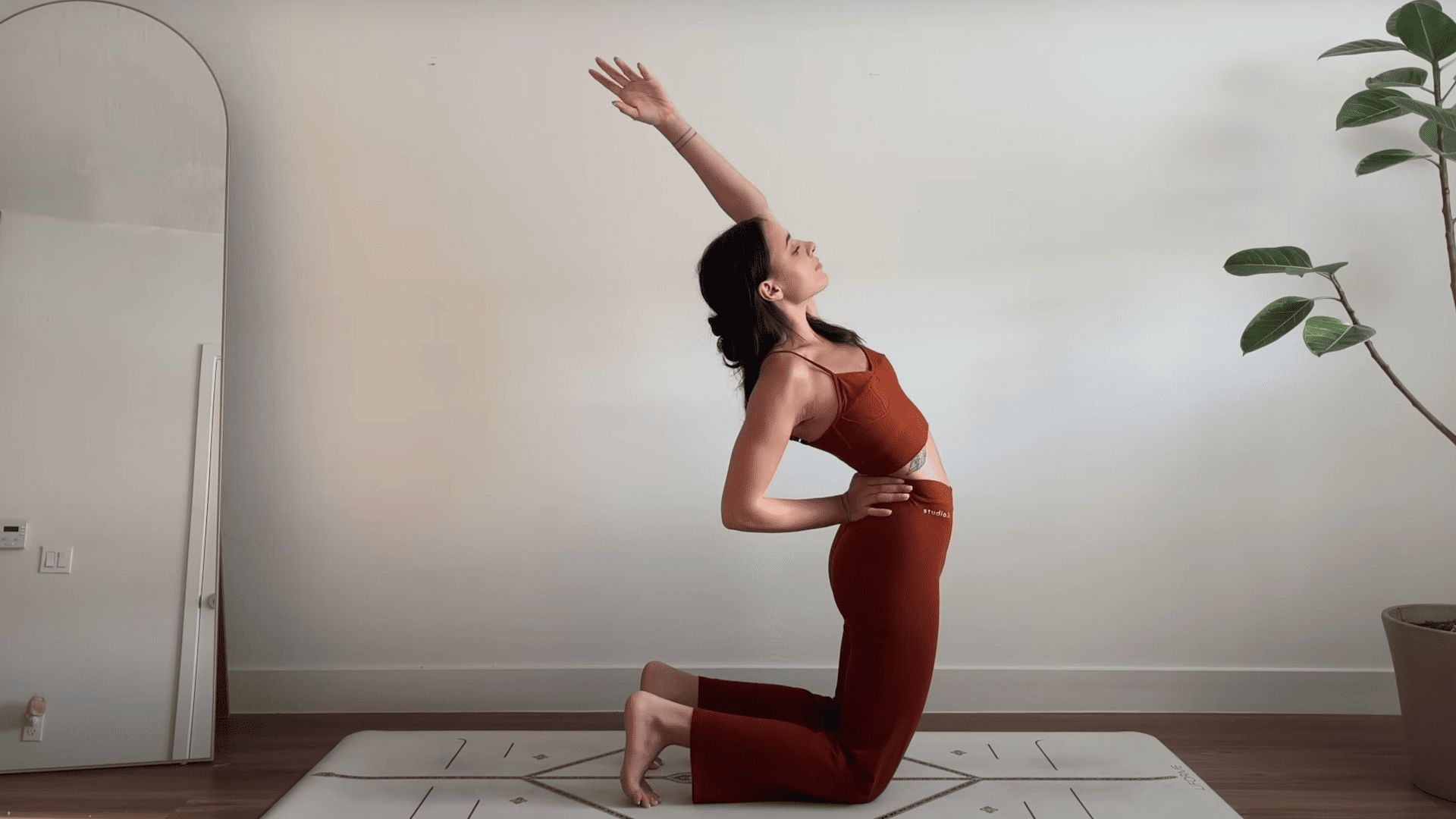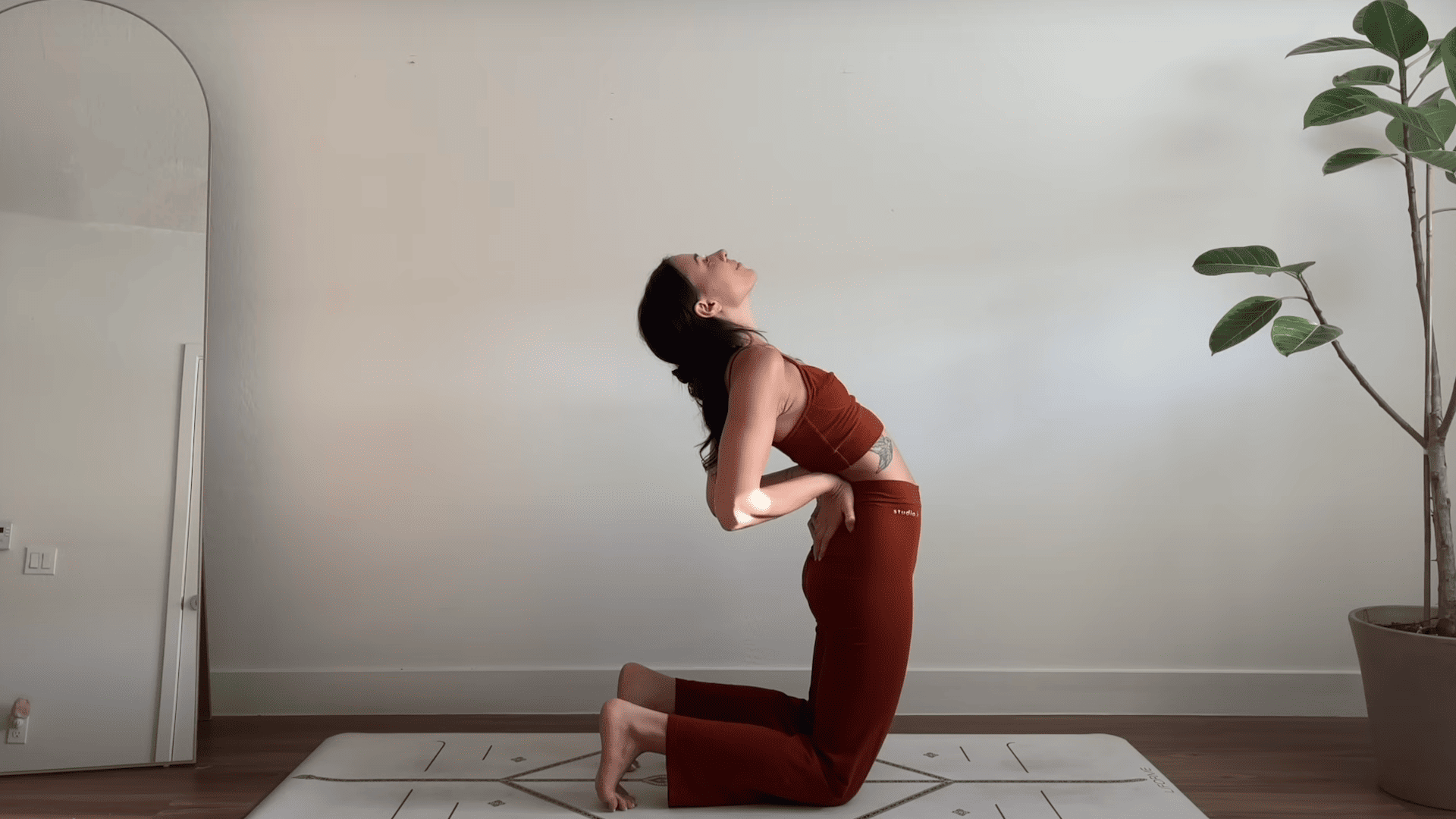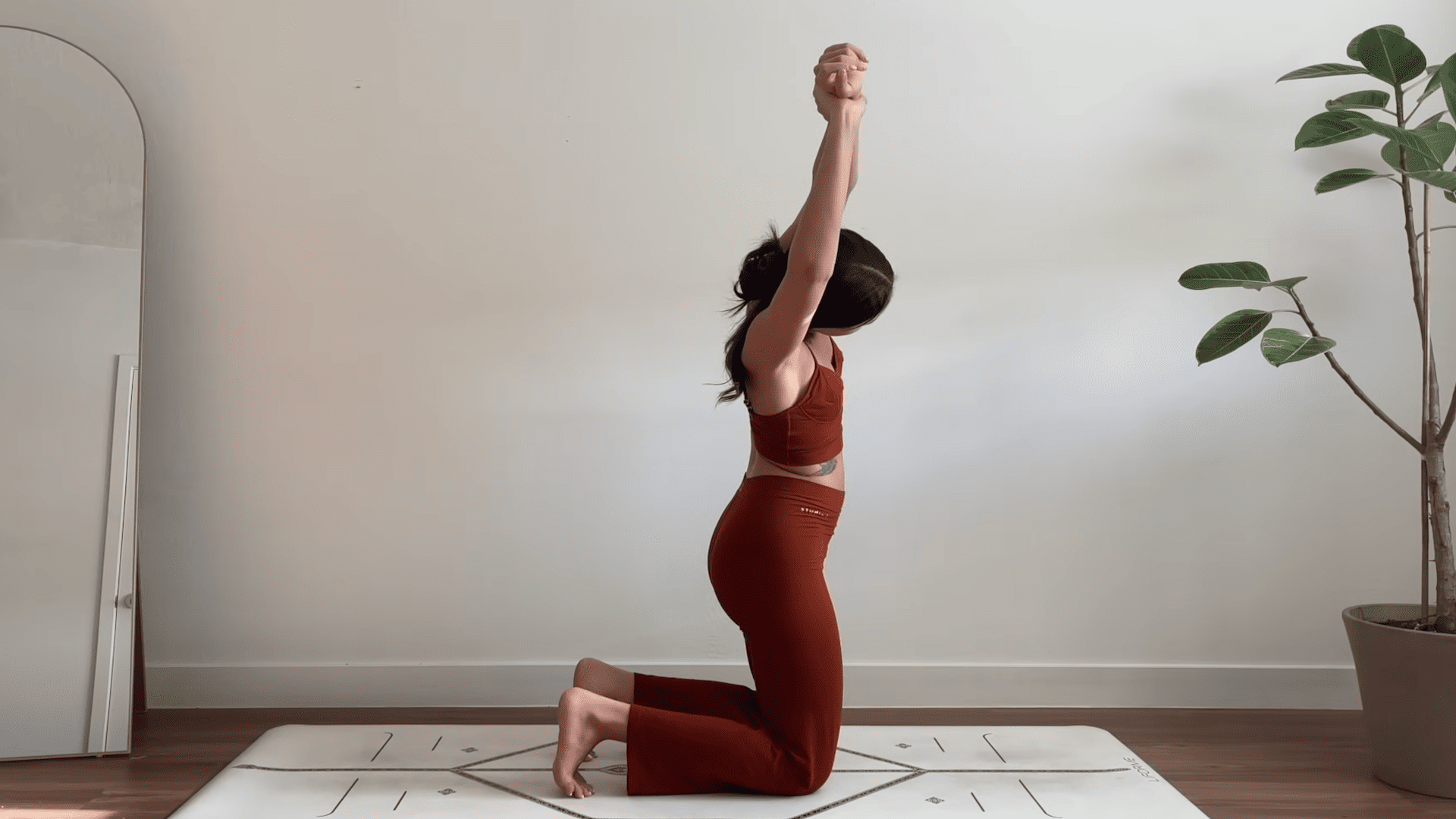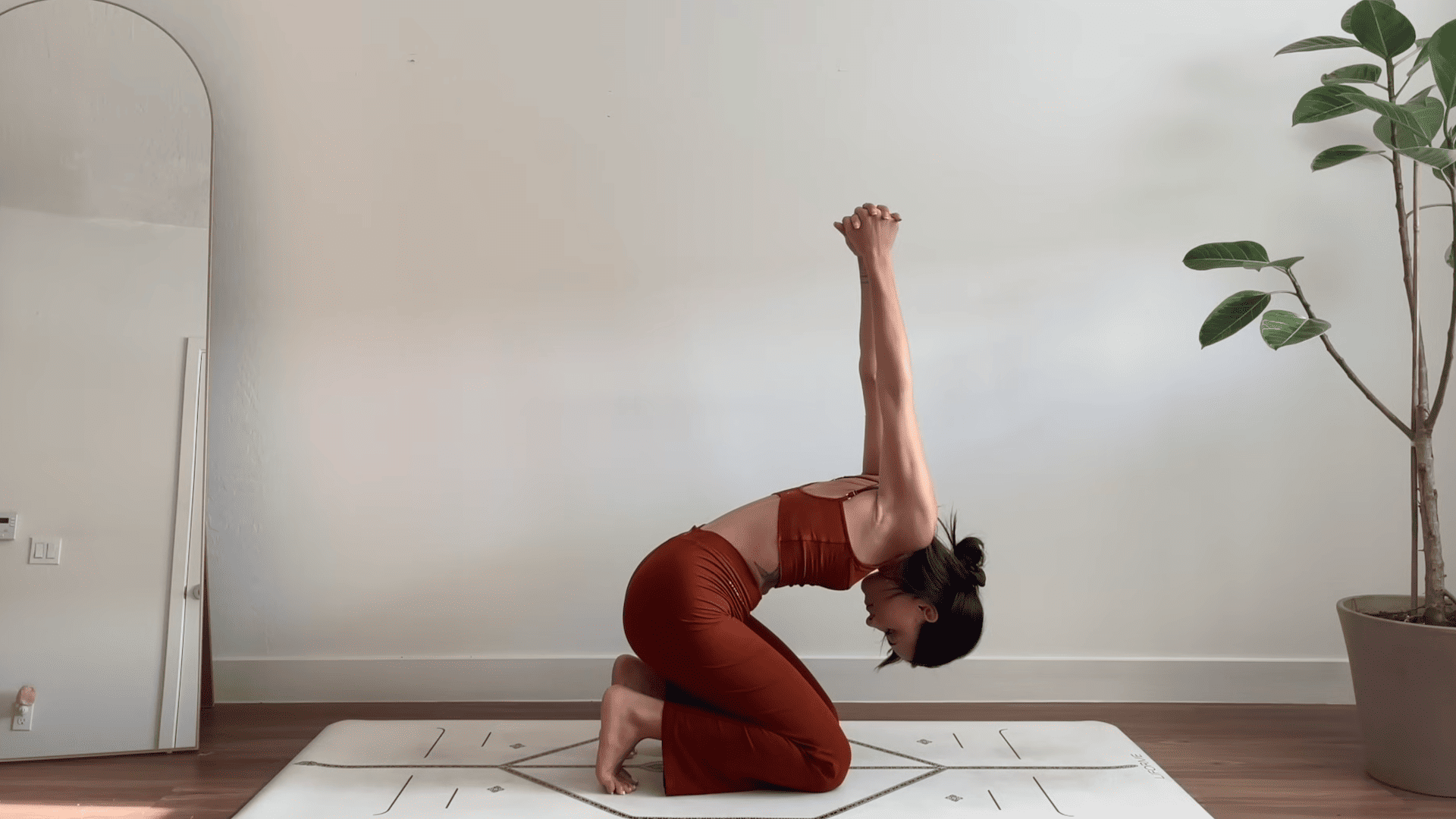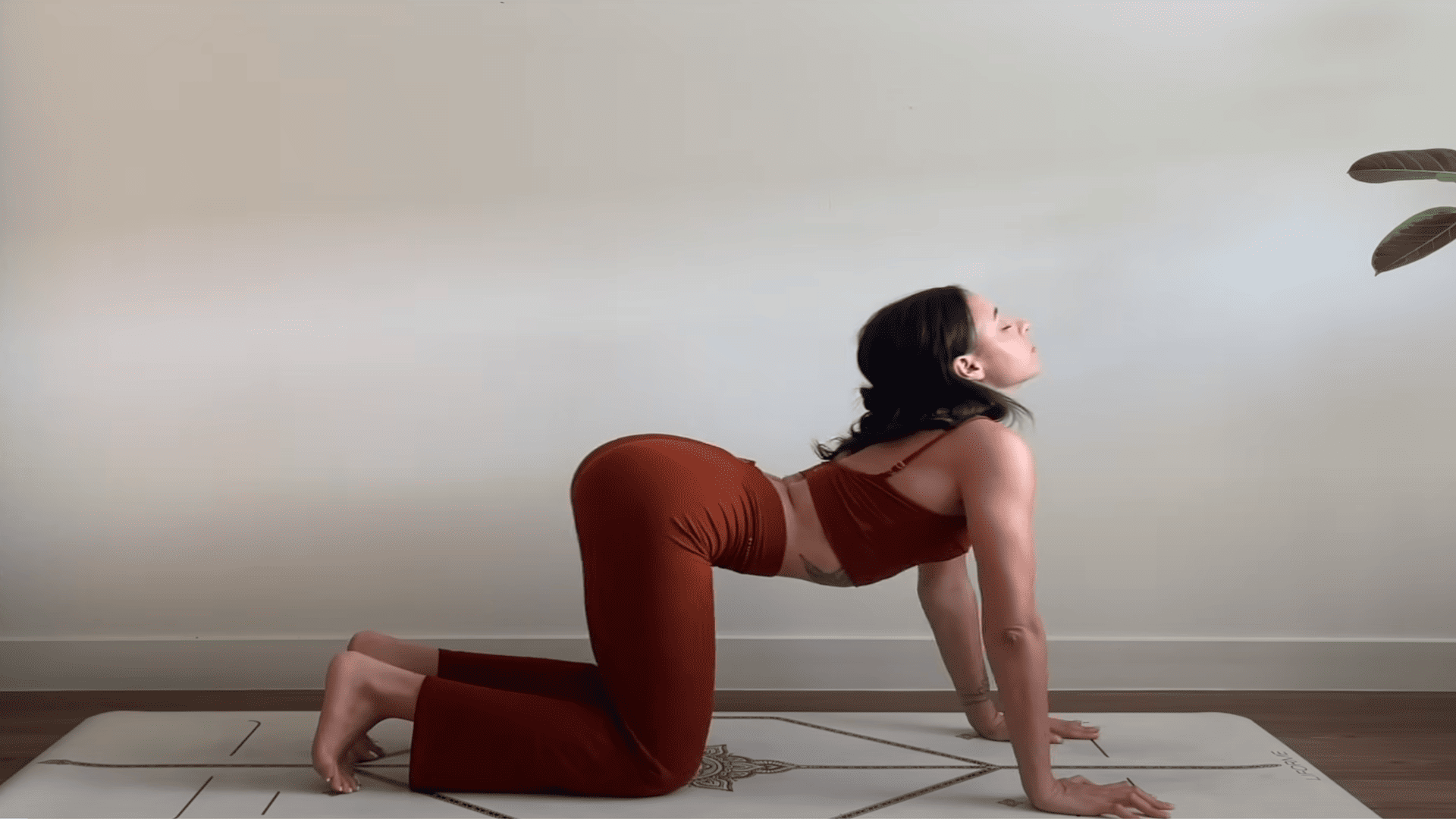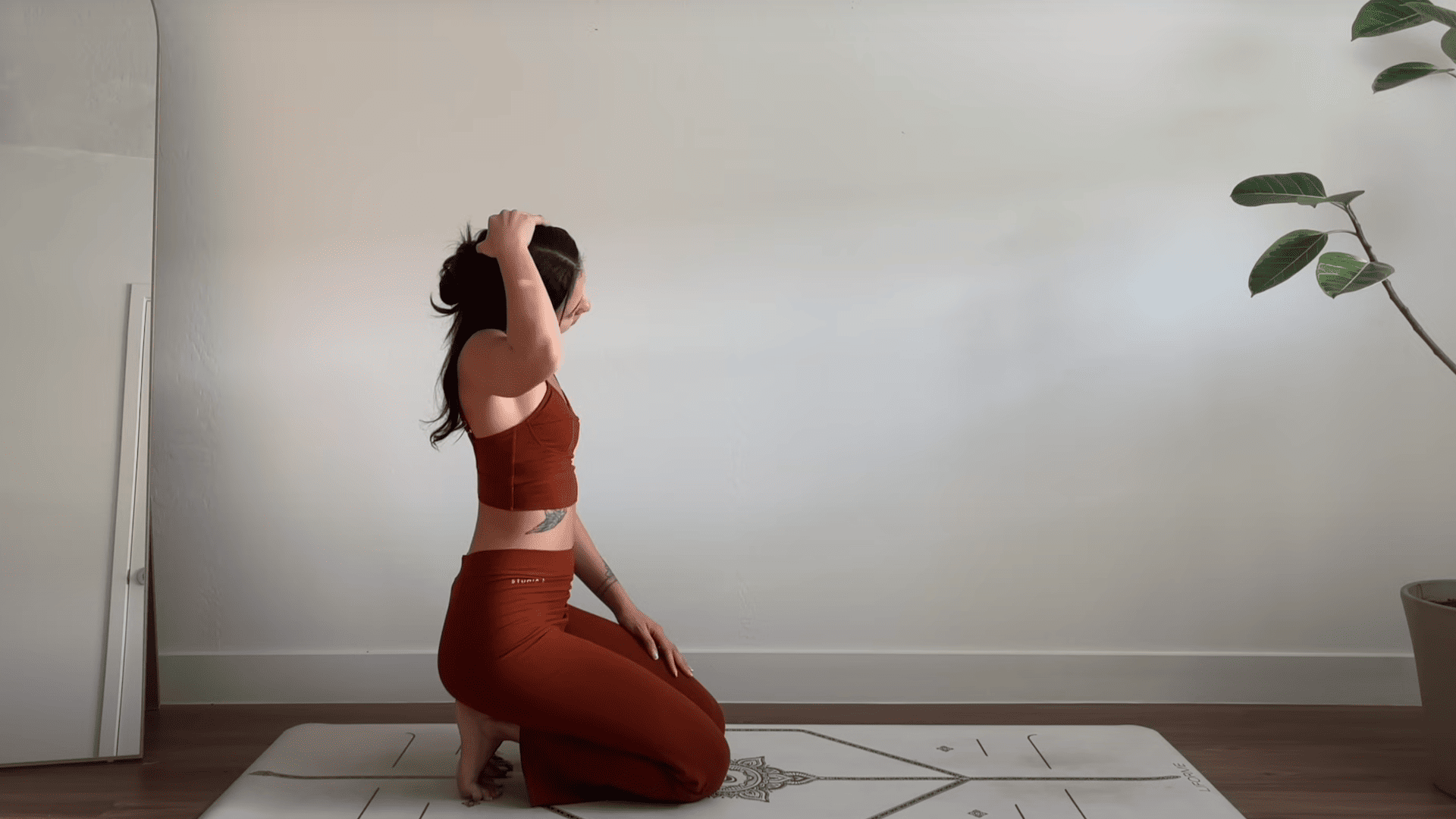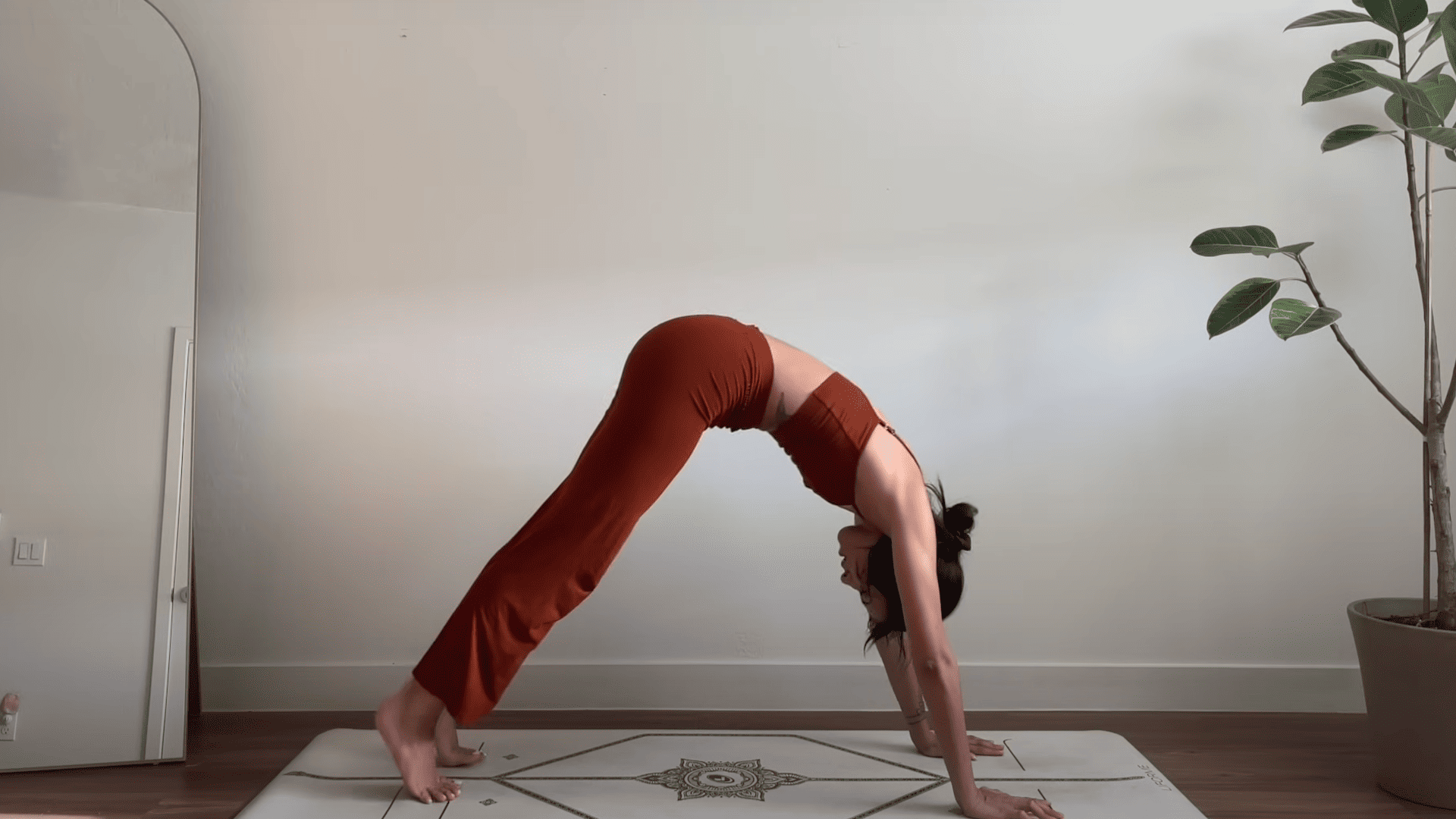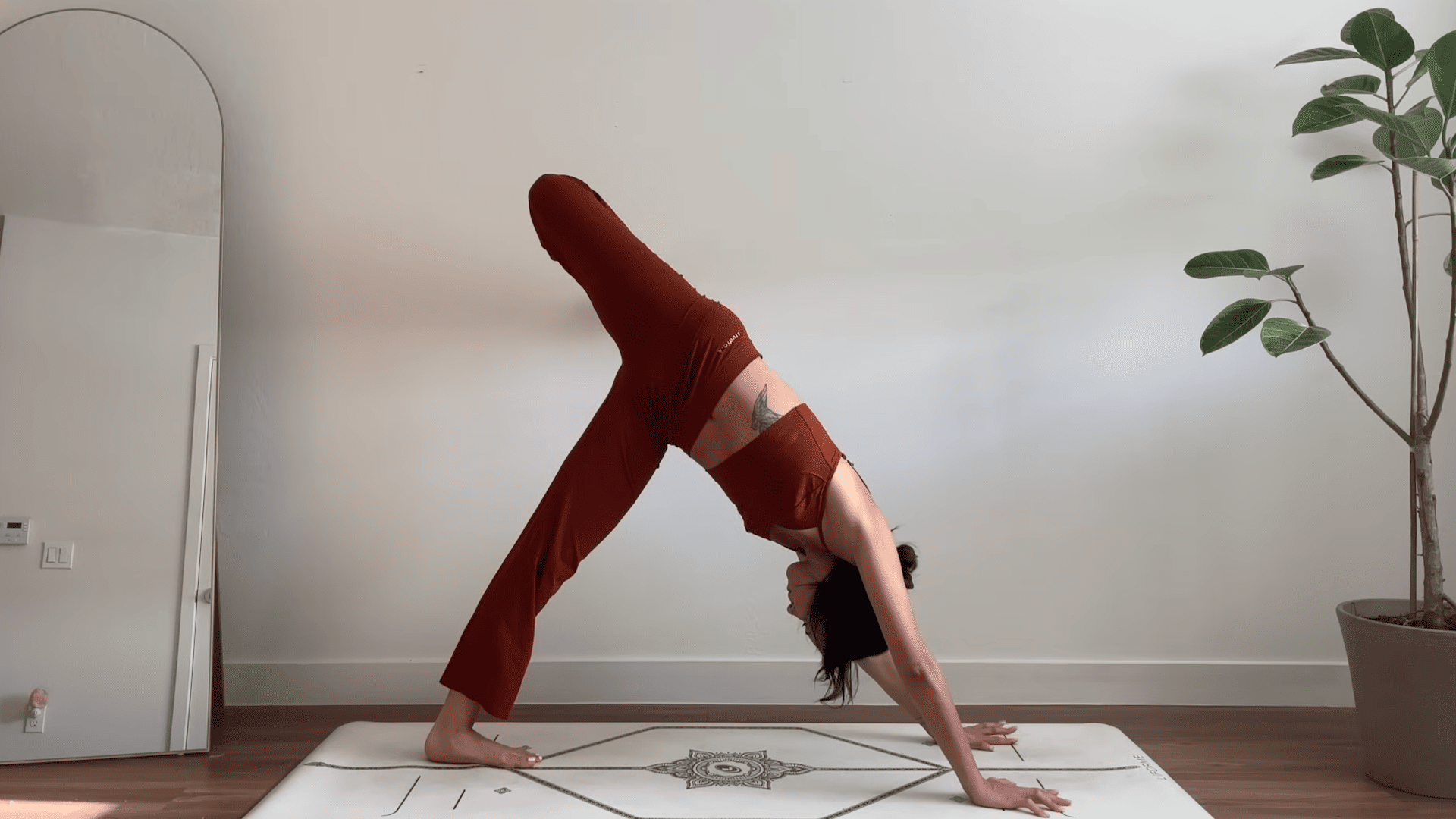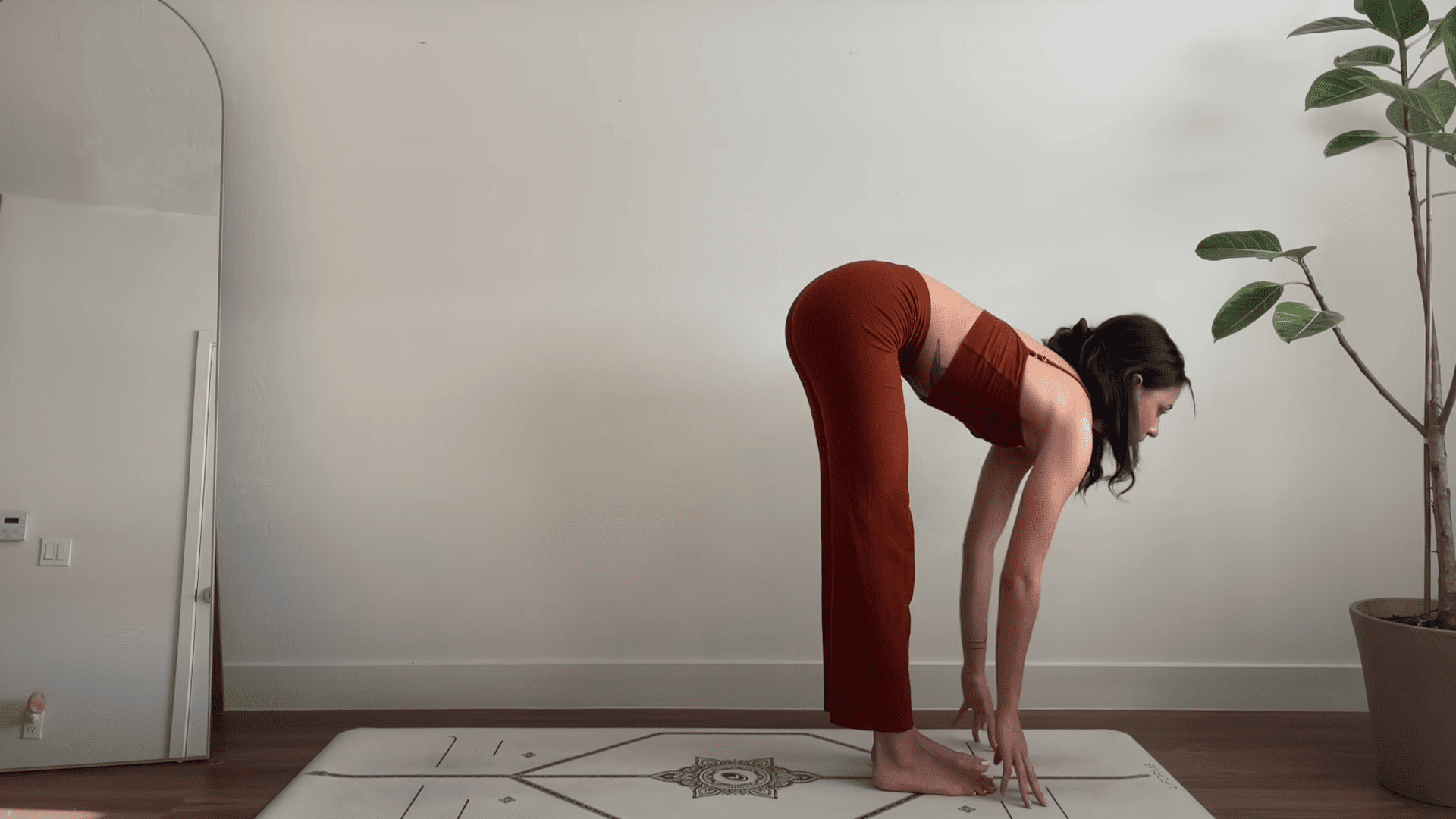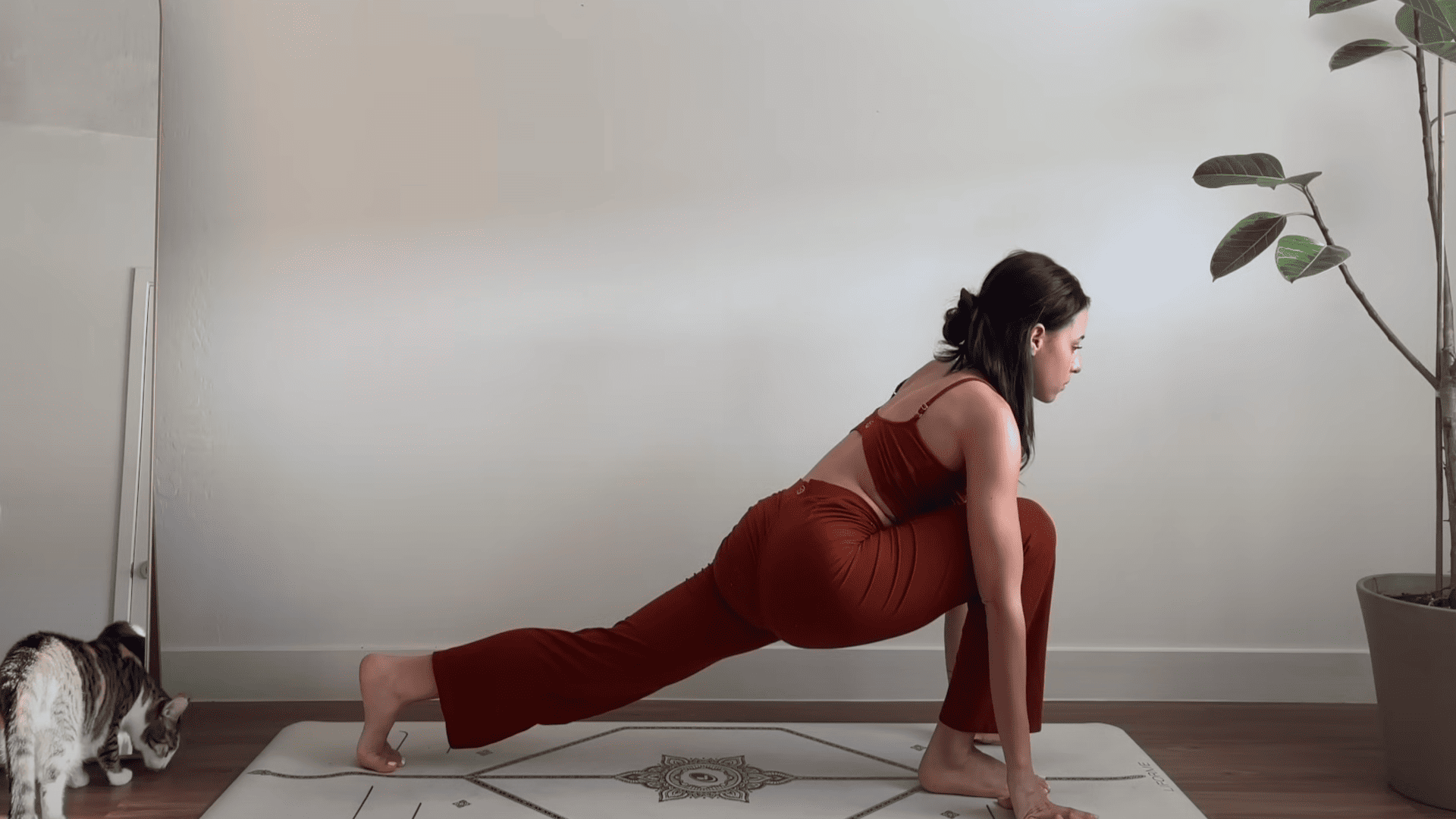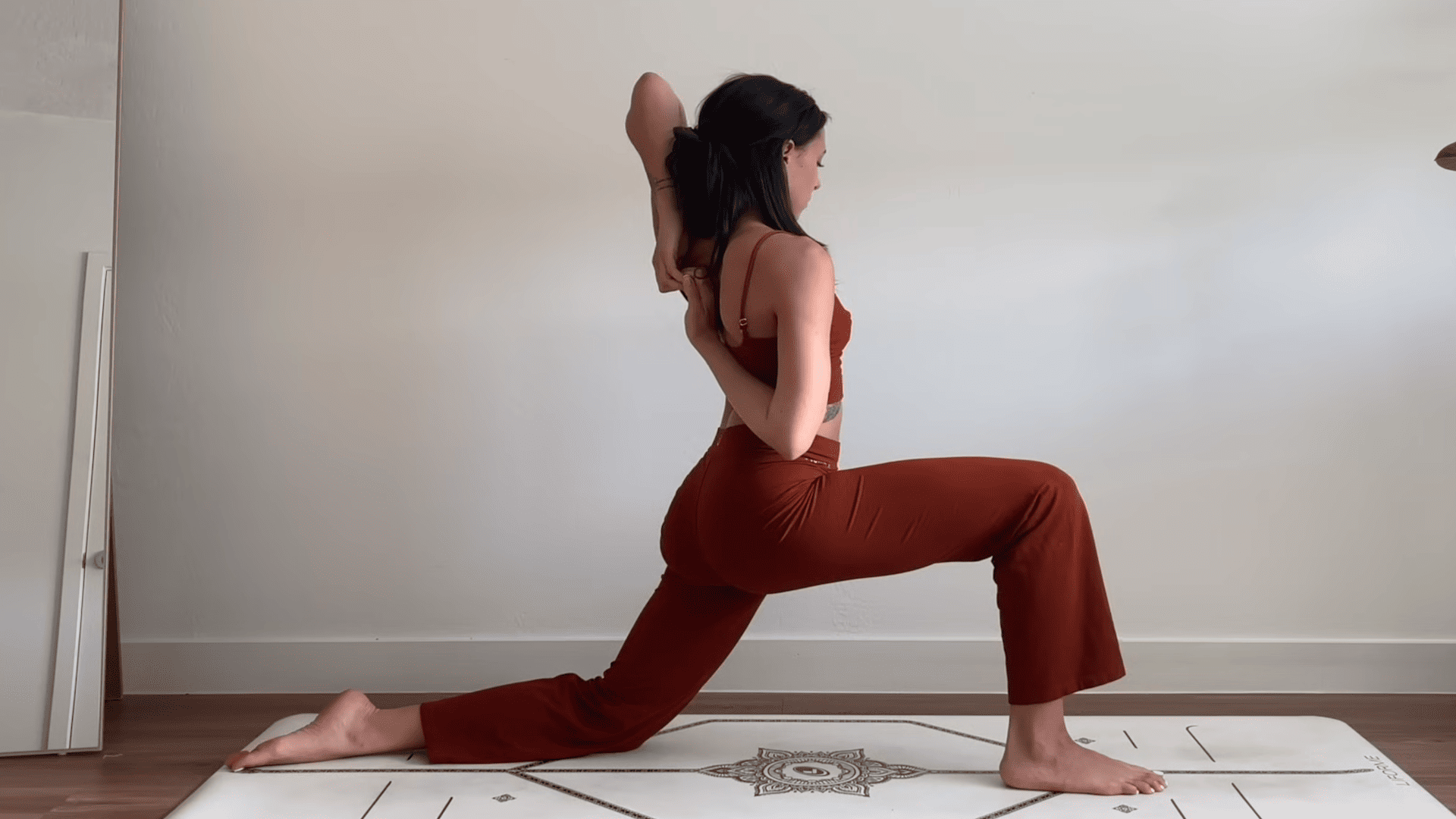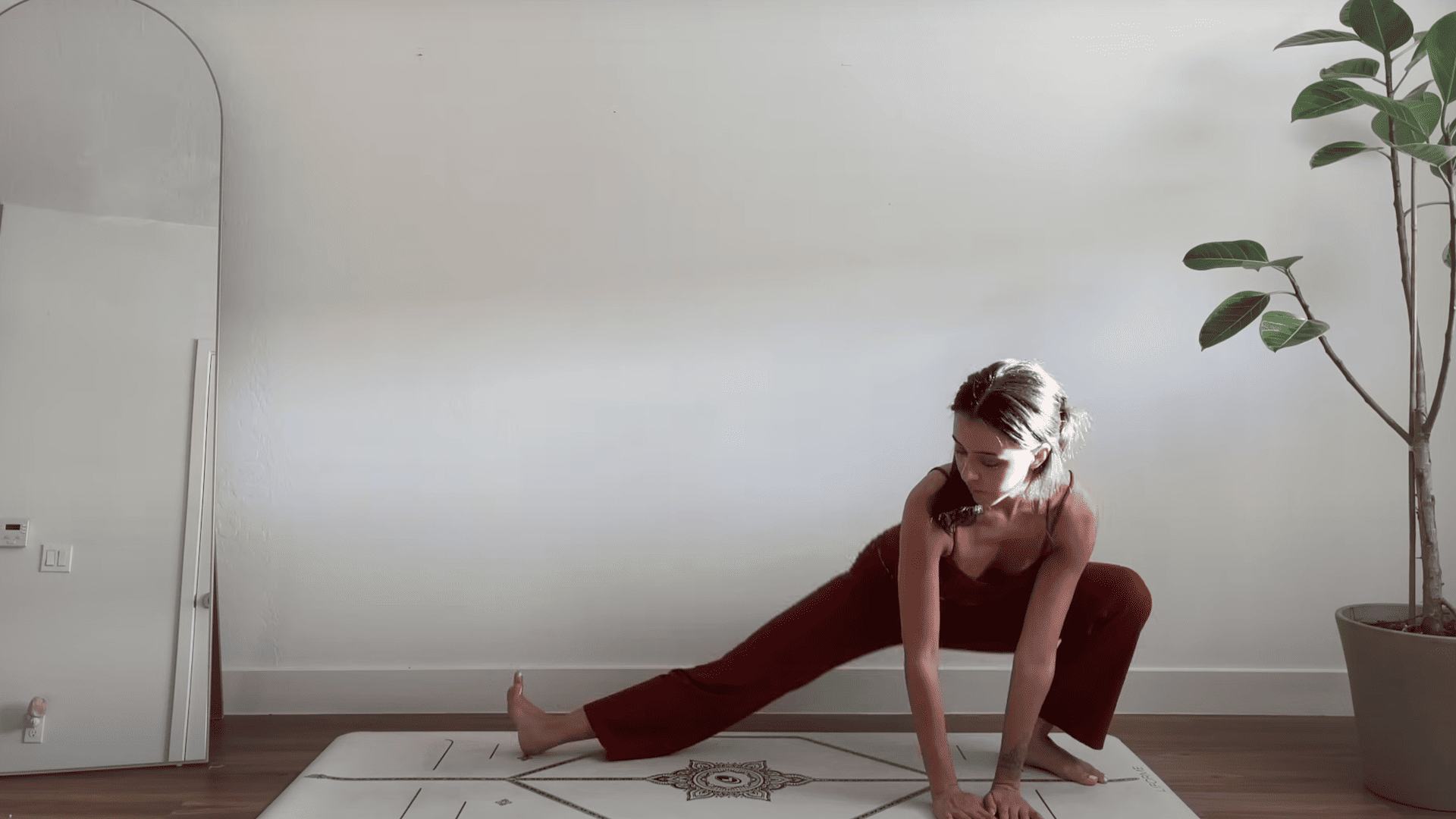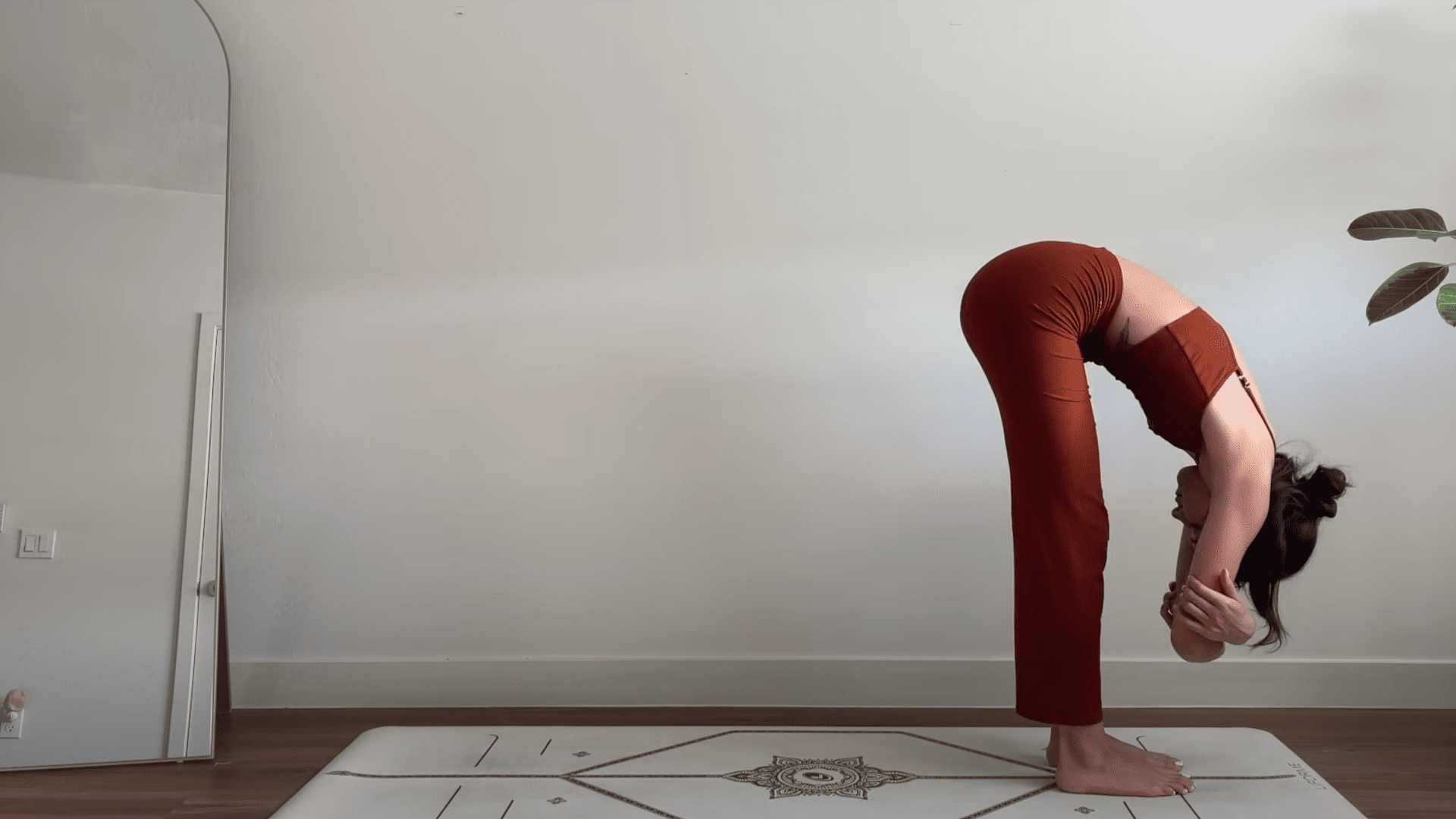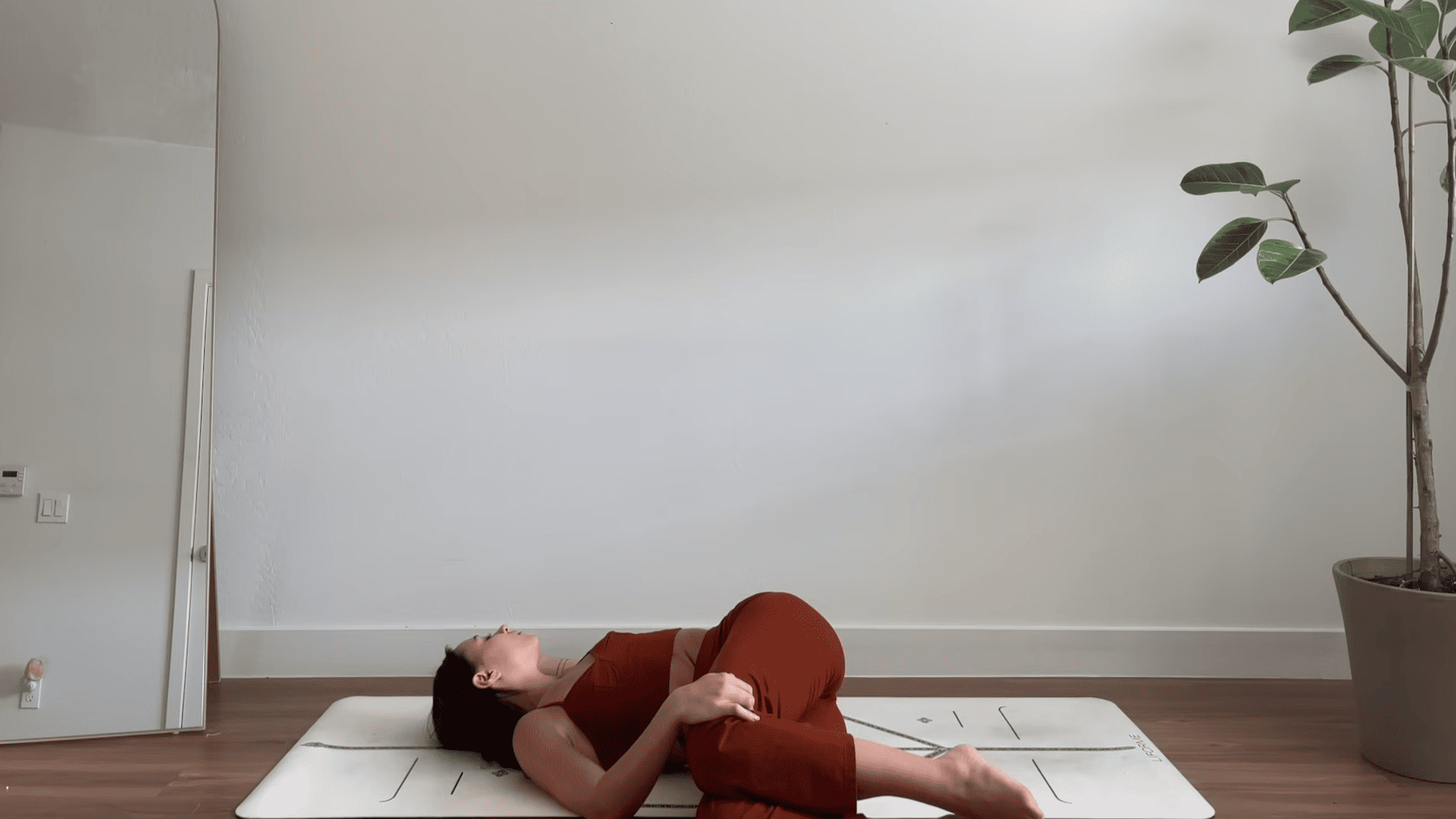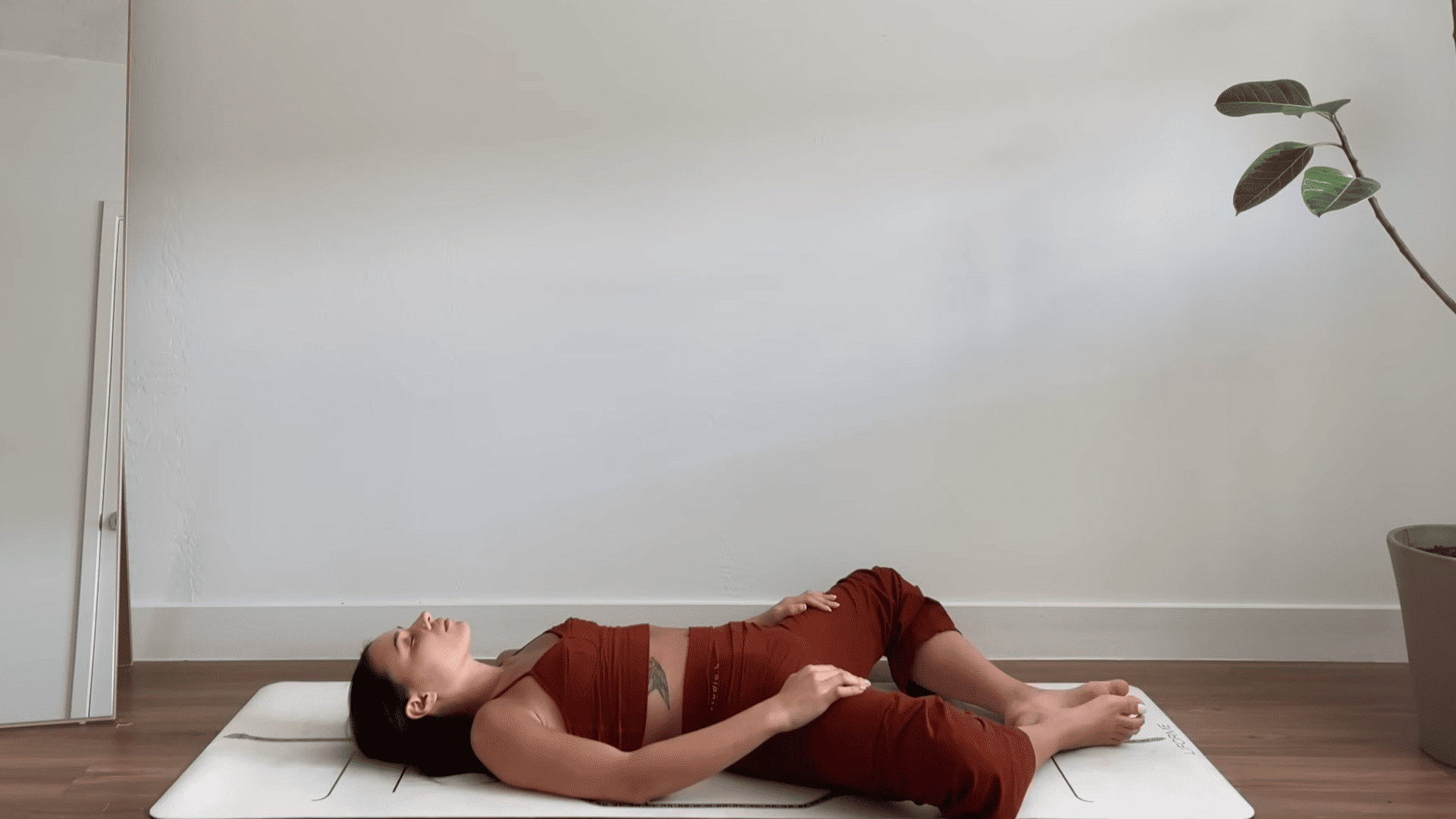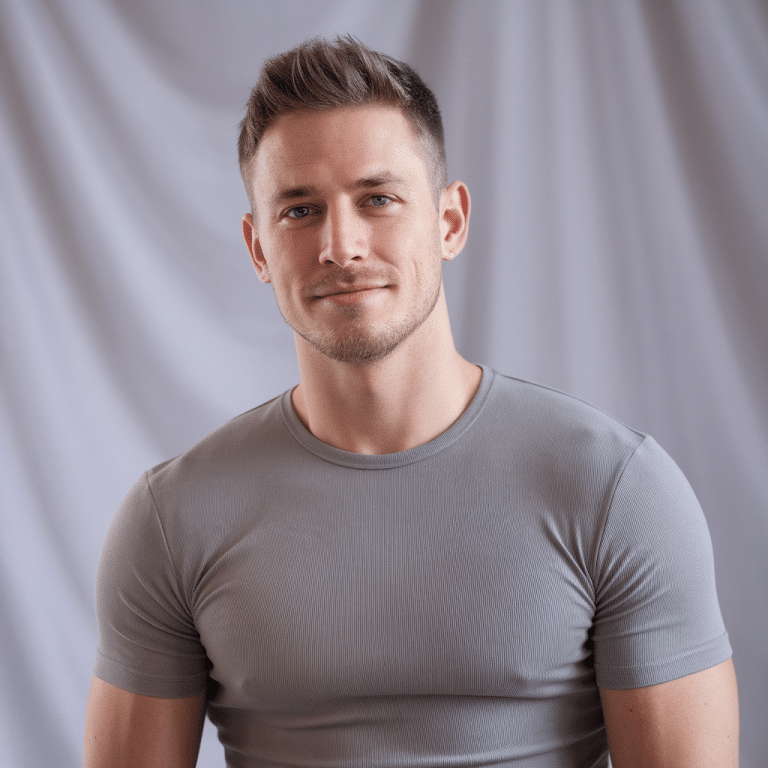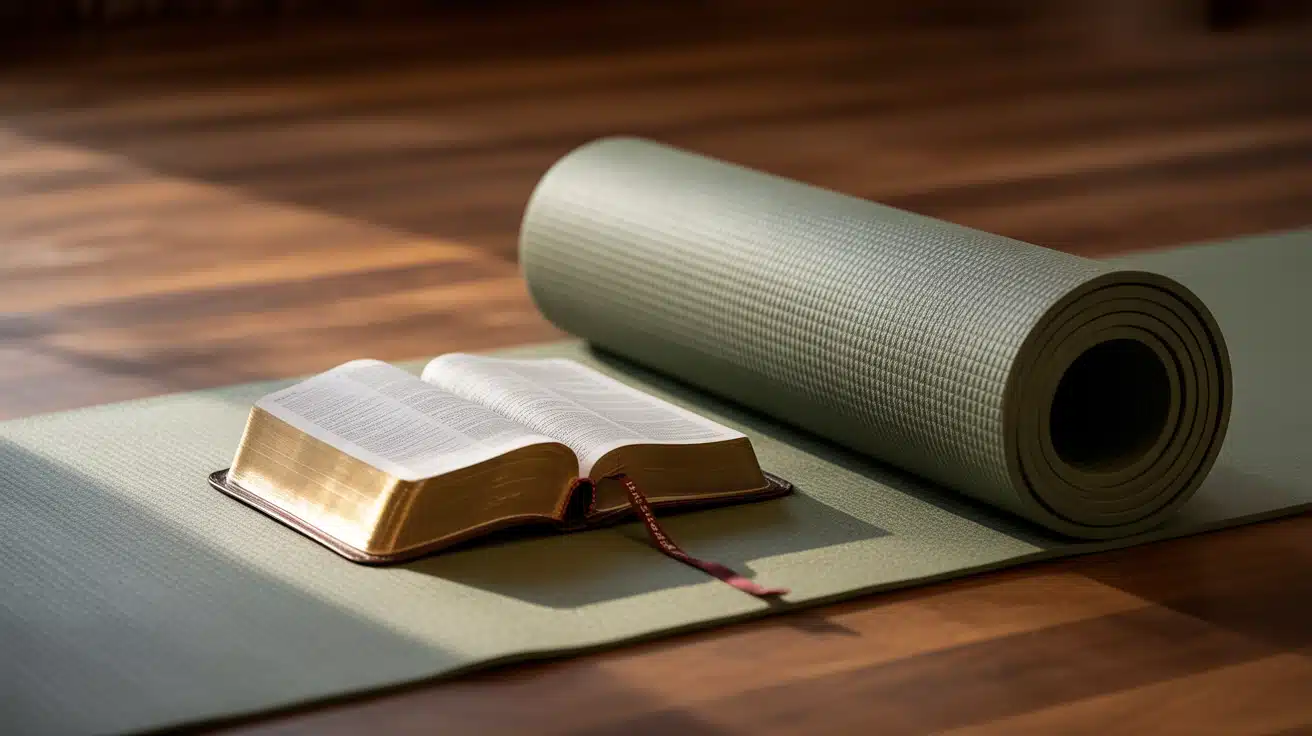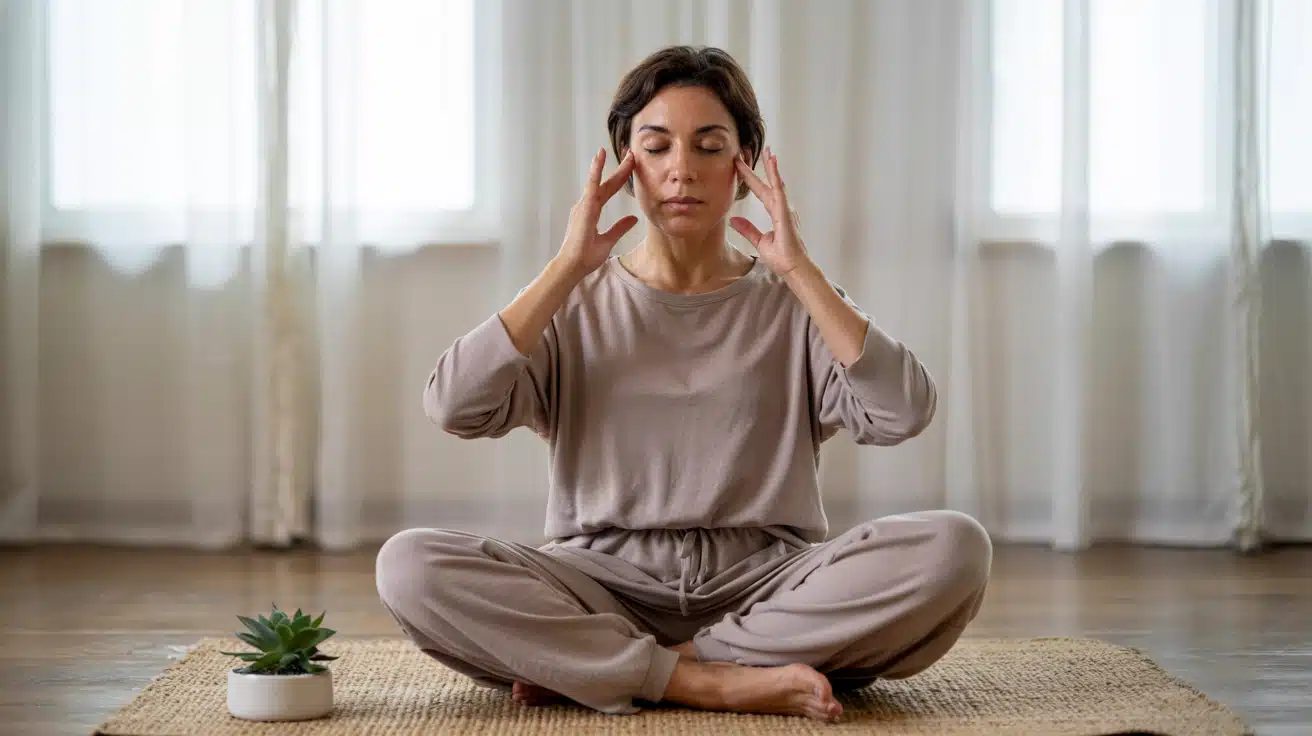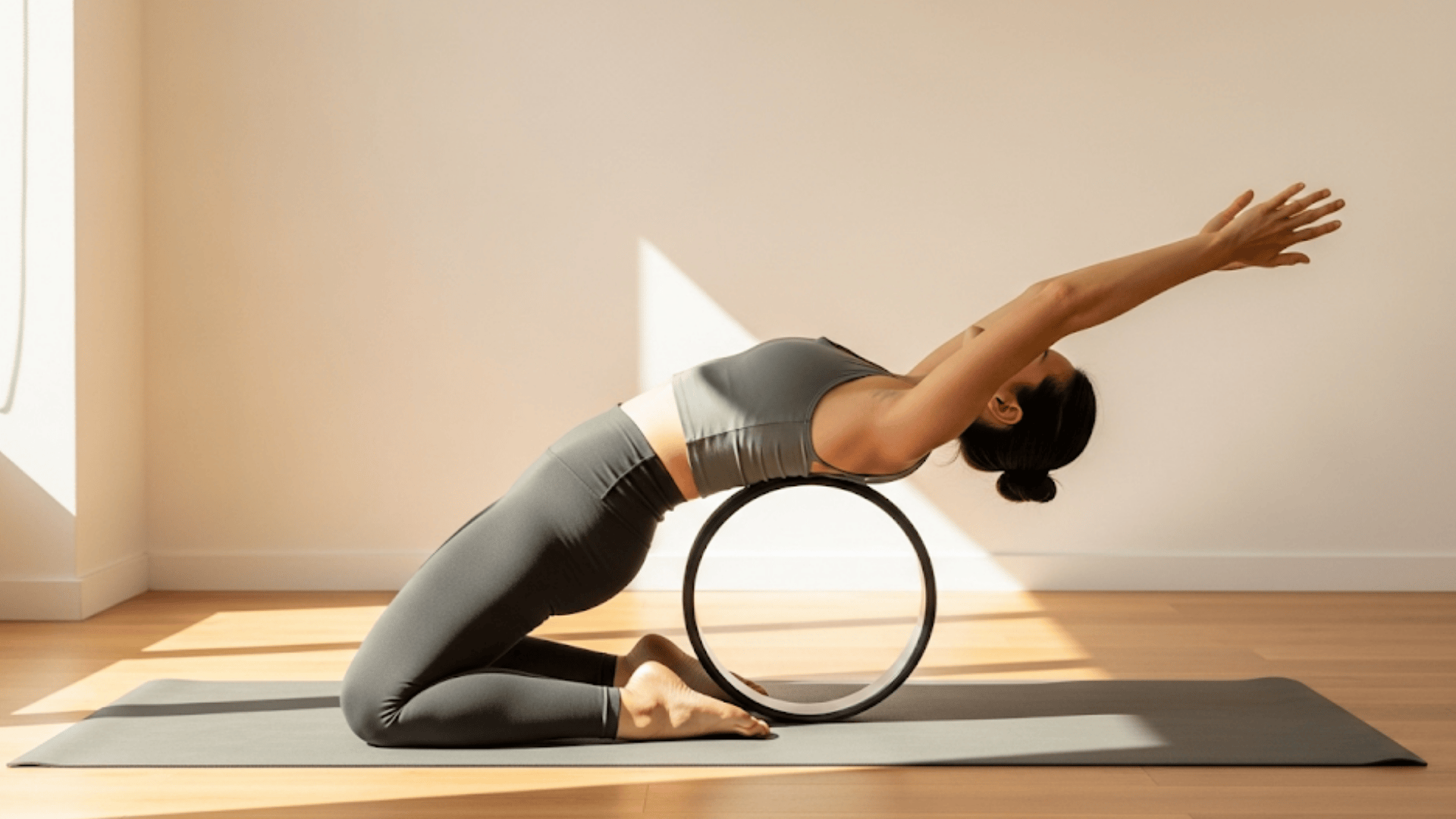Feeling overwhelmed by fast-paced yoga classes that leave you breathless rather than centered?
A slow flow yoga sequence might be exactly what your body and mind need.
This gentle approach combines the continuous movement of Vinyāsa with mindful pacing, allowing you to truly connect with each pose.
Unlike traditional Vinyāsa classes that rush through positions, a slow flow yoga sequence gives you time to settle into each pose and feel the benefits.
This practice helps calm your nervous system while building strength and flexibility gradually, making it perfect for beginners or anyone returning to yoga after time away.
What Is a Slow Flow Yoga Sequence?
A slow-flow yoga sequence combines the flowing movement of Vinyāsa with the mindful pacing of Hatha yoga.
This practice emphasizes deliberate transitions between poses, allowing you to connect deeply with breath and body awareness.
Unlike faster-paced styles, a slow-flow yoga sequence gives you time to fully experience each position before moving to the next, creating a meditative practice accessible to practitioners of all levels.
15-Step Slow Flow Yoga Sequence
This gentle, slow flow yoga sequence moves through 15 key poses that connect breath with mindful movement.
Each position flows naturally into the next, creating a meditative practice that calms your nervous system while building strength and flexibility.
Step 1. Kneeling Side Stretches
Start kneeling with shoulders over hips.
Tuck your toes under, place your right hand on your low back, press your hips forward, and reach your left arm up and over. Hold for 3-5 breaths, then repeat on the opposite side.
This gentle opening prepares your body for the slow flow yoga sequence ahead.
Step 2. Supported Backbend
Place both palms to low back for support.
Lean back as far as comfortable and take one deep breath, opening the heart and countering forward posture.
Step 3. Standing Side Bends
Reach arms overhead. Right fingertips grab left wrist as you lean right, then return through the center.
Left fingertips grab right wrist as you lean left. Hold each side for 2-3 breaths.
Step 4. Heart Opening Flow
Interlace fingers behind the low back into a fist. Straighten arms, squeeze shoulder blades, lift heart toward sky.
Exhale, hips back toward heels, lower crown of head down, lift fist up and over.
Repeat 3 times, connecting breath with flowing movement.
Step 5. Cat-Cow Stretches
Move to tabletop pose. Inhale to drop belly and lift gaze, exhale to round spine and tuck chin to chest.
Continue for 5 rounds, letting breath guide movement in this foundational slow flow yoga sequence element.
Step 6. Toe Squat with Neck Stretches
Tuck toes under and sit hips back toward heels.
Draw the right ear to the right shoulder with the right hand support, breathe into the left neck.
Repeat on the opposite side for a balanced release.
Step 7. Downward Dog with Heel Lifts
Plant hands and lift into downward dog.
Root down through palms, gently press heels toward the ground. Inhale to lift heels high, exhale to sink them down.
Repeat 3 times to warm calves and create awareness.
Step 8. Three-Legged Dog Flow
Root down through the left leg, inhale the right leg high. Bend knee and stack right hip over left for scorpion variation.
Breathe into your hips, then straighten and release. Repeat on the opposite side.
This hip opening prepares you for deeper stretches in the slow flow yoga sequence.
Step 9. Forward Fold Flow
Walk feet toward hands. Inhale halfway lift, exhale fold.
Repeat this flowing movement 3 times, creating rhythm and connection with breath.
Step 10. Runner’s Lunge Flow: Both Sides
Step your left foot back into a runner’s lunge with your right foot forward.
Move through a lunge hold, then a twisted lunge with your left palm down and right hand on your thigh.
Shift into an IT band stretch on the outer edge of your back foot, then lift your hips and reach overhead for a side body stretch.
Straighten your front leg and fold into pyramid pose, then lower into lizard pose with hands inside your front foot and back knee down.
Return to downward dog and repeat with the left foot forward.
Step 11. Low Lunge with Shoulder Bind: Both Sides
From lizard pose, return to low lunge and reach arms up.
Create a shoulder bind with the top elbow behind the back and the bottom arm reaching underneath, or bring palms to opposite elbows behind the back. Hold for 2-3 breaths on each side.
Step 12. Wide-Legged Standing Sequence
Turn to face the long edge of the mat with legs wide. Forward fold toward right foot, then lift into side lunge (right toes out, left leg straight).
Return through the center and repeat on the left side. This sequence opens the inner thighs and hamstrings.
Step 13. Ragdoll Pose
Walk hands to face the front of the mat, step feet together.
Bring your hands to opposite elbows and gently sway side to side, releasing tension in your spine and shoulders.
Step 14. Supine Hip Opening Flow
Sit down and transition to your back.
Move through happy baby pose (arms inside legs, knees toward ribs, gentle rocking), then supine twists (knees together, drop legs right with left arm extended, then switch sides).
Hold each twist for several breaths.
Step 15. Final Rest
Choose savasana with legs extended or the reclined butterfly pose with soles of feet together. Close your eyes, take a deep breath in through the nose, and slowly breathe out through the mouth.
Rest for several minutes, allowing your nervous system to integrate all the benefits of your slow flow yoga sequence practice.
Video Tutorial
I’d like to give credit to Jess Yoga for their informative video, as a reference for this guide.
Common Mistakes in Slow Flow Yoga
Even with its accessible nature, practitioners often make specific errors that can diminish the benefits of a slow flow yoga sequence.
Understanding these common mistakes helps you practice more effectively and safely while getting the most from your mindful movement practice.
- Rushing transitions: Moving too quickly between poses essentially turns slow flow into regular vinyasa. Each transition in a slow flow yoga sequence should feel deliberate and controlled, allowing your breath to guide the timing rather than external pressure to keep up.
- Holding the breath: Many practitioners unconsciously hold their breath during challenging poses or transitions, which works against the principles of slow flow. Breath should remain steady and continuous throughout the entire practice, serving as both anchor and guide for movement.
- Skipping props: Props provide essential support that allows you to practice a slow flow yoga sequence safely and comfortably. Blocks, straps, bolsters, and blankets help maintain proper alignment while reducing strain, making poses accessible and sustainable for longer holds.
- Over-focusing on flexibility: Making flexibility the primary goal can create tension and force that contradict slow flow principles. A slow-flow yoga sequence should feel sustainable and comfortable, rather than like a stretching session pushed to your limits.
- Not adjusting for energy and time of day: Using the same slow flow yoga sequence regardless of your energy level or time of day misses opportunities for optimal practice. Your body has different needs in the morning compared to the evening, so listen to your body’s signals and adjust accordingly.
Is Slow Flow Yoga Right for You?
Understanding who benefits most from a slow-flow yoga sequence helps determine if this practice style aligns with your current needs and circumstances.
This gentle approach works well for many people, though certain conditions require careful consideration.
| Best Suited For | Requires Caution |
|---|---|
| Beginners learning proper alignment and building confidence | Acute injuries needing professional evaluation |
| People managing stress, anxiety, or seeking nervous system regulation | Pregnancy without qualified prenatal instruction |
| Those easing back into yoga after time away or minor injury recovery | Severe medical conditions (osteoporosis, recent surgeries, heart conditions) |
| Individuals preferring meditation through movement over seated practice | Anyone experiencing pain during movement |
When in doubt about whether a slow flow yoga sequence is appropriate for your situation, consult with healthcare providers or certified yoga instructors who understand your specific needs.
Always listen to your body’s signals during practice and modify or skip movements that feel uncomfortable.
The Bottom Line
Incorporating a slow flow yoga sequence into your routine offers a powerful way to build strength, flexibility, and inner calm without the pressure of keeping up with faster-paced classes.
This mindful approach to movement allows your body to adapt gradually while your nervous system learns to relax and reset.
Remember that consistency matters more than intensity when practicing a slow flow yoga sequence.
Start with just a few poses and gradually build your practice as you become more comfortable with the slower pace. Listen to your body, use props when needed, and avoid rushing through transitions.
Looking for a longer flow? Try our complete Yoga Routines to move mindfully ›
Frequently Asked Questions
What is Slow Flow Yoga vs Vinyasa?
Slow flow holds poses for multiple breaths with mindful transitions, while vinyasa moves quickly with one breath per movement, creating more heat and intensity.
What is Slow Flow Yoga Called?
Slow flow yoga is also called gentle flow, mindful flow, or slow vinyasa. Some studios may call it hatha flow or restorative flow.
Is Slow Flow the Same as Hatha?
No, slow flow maintains continuous movement between poses, while hatha yoga holds individual poses with complete pauses between them for longer periods.

